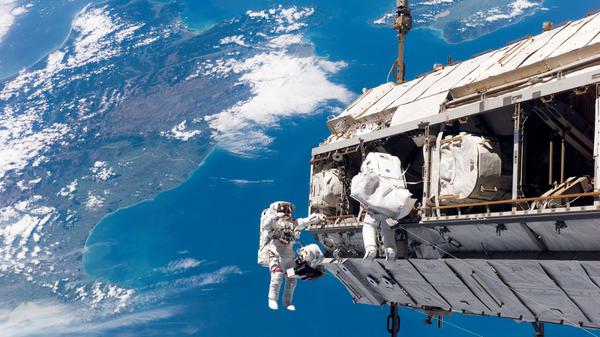By clothing-bag, 31/01/2022
This is the European Space Agency's research to keep astronauts' 'underwear' clean
Spacewalking is an important step in any astronaut's career, but there's a slight downside: Putting on a spacesuit means sharing some previously worn underlayers. The European Space Agency (ESA) is investigating how to keep these items clean and hygienic as they come into contact with the intimate parts of those who move through space.
When explorations into space began, each astronaut received his 'External Mobility Unit'. However, the new crews that travel to the International Space Station share their suits.
So that they do not come into direct contact with the space uniform, astronauts usually wear a 'Maximum Absorbency Garment' disposable diaper, a thermal comfort underwear and a long-lasting liquid cooling and ventilation garment (LCVG).
However, the LCVG is reused by different spacewalkers alongside the suits. This reuse is likely to grow with the creation of Gateway, the lunar-orbiting international space station they plan to build later this decade.

Because of this possible increase, the ESA has started a project called 'Biocidal Advanced Coating Technology for Reducing Microbial Activity' (BACTeRMA). ESA materials engineer Malgorzata Holynska explained the aim of the study: "Textiles in space, especially when they are subject to biological contamination, for example space suit underwear, can pose both engineering and environmental risks. doctors during long-haul flights.
With this research, the space agency is developing a technology to search for small molecules that kill bacteria. This can be useful for textiles used in space, including astronaut underwear.
"Astronauts wear their clothes every other day and eventually get rid of them by burning them inside spacecraft," says ESA life support specialist Christophe Lasseur. But there are some elements and surfaces that have to be shared.”
To prevent biological contamination, antimicrobial materials are used, such as silver or copper, which with oxygen or water alter the functioning of the microbial physiology. However, long-term use of these materials can cause skin irritation, according to Seda Özdemir-Fritz, project scientist for the Austrian Space Forum (Österreichisches Weltraum Forum).
With the idea of finding an alternative, the Austrian Space Forum is collaborating with the Vienna Textile Laboratory. Through a bacteriographic collection of what they call 'secondary metabolites', they seek a way to protect themselves from extreme environmental conditions. Özdemir-Fritz has reported that this project will attempt to create "an innovative antimicrobial textile finish" for spacesuits.
For the study, processed textiles with antimicrobial properties will be exposed to perspiration and radiation tests. In addition, they will also be tested with simulated lunar dust to see how the suits would work on trips to the Moon or Mars. With the BACTeRMA project, Seda Özdemir-Fritz assures that the Austrian Space Forum is interested "in the human factors involved in future missions to Mars and the Moon”.
Sign up for our newsletter and receive the latest technology news in your email.
Related Articles